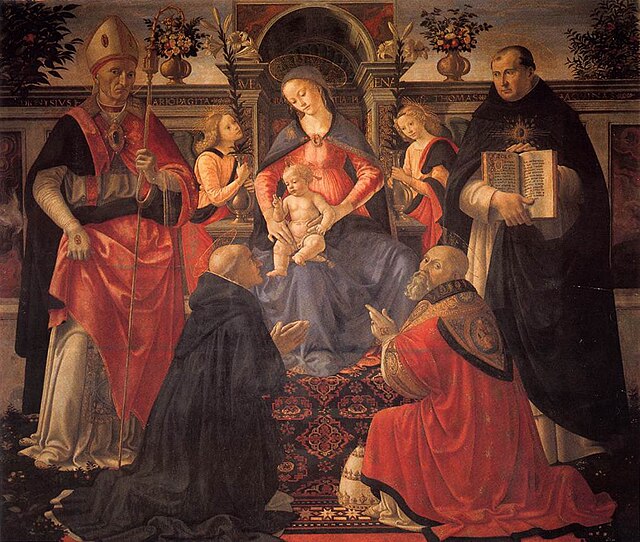Dionysius the Areopagite was an Athenian judge at the Areopagus Court in Athens, who lived in the first century. A convert to Christianity, he is venerated as a saint by multiple denominations.
Mosaic of Dionysius in Hosios Loukas monastery
Dionysius the Areopagite with Thomas Aquinas, Madonna and the Child. Madonna and Child Enthroned between Angels and Saints by Domenico Ghirlandaio 1486.
Διονυσίου του Αρεοπαγίτου, τα σωζόμενα πάντα, or Sancti Dionysii Areopagitæ, opera omnia quæ extant [All extant works of Dionysius the Areopagite] (Venice: Antonio Zatta, 1756)
The Areopagus is a prominent rock outcropping located northwest of the Acropolis in Athens, Greece. Its English name is the Late Latin composite form of the Greek name Areios Pagos, translated "Hill of Ares". The name Areopagus also referred, in classical times, to the Athenian governing council, later restricted to the Athenian judicial council or court that tried cases of deliberate homicide, wounding, and religious matters, as well as cases involving arson of olive trees, because they convened in this location.
The war god Ares was supposed to have been tried by the other gods on the Areopagus for the murder of Poseidon's son Halirrhothius.
The Areopagus as viewed from the Acropolis.
Engraved plaque containing Apostle Paul's Areopagus sermon.
Picture of the Acropolis taken from the Areopagus
Idealized reconstruction of the Areopagus (front) and the Acropolis, Leo von Klenze, 1846.



![Διονυσίου του Αρεοπαγίτου, τα σωζόμενα πάντα, or Sancti Dionysii Areopagitæ, opera omnia quæ extant [All extant works of Dionysius the Areopagite] (Ve](https://upload.wikimedia.org/wikipedia/commons/thumb/b/bb/Dionysiou_Ta_Sozomena_Panta.tif/lossy-page1-400px-Dionysiou_Ta_Sozomena_Panta.tif.jpg)



